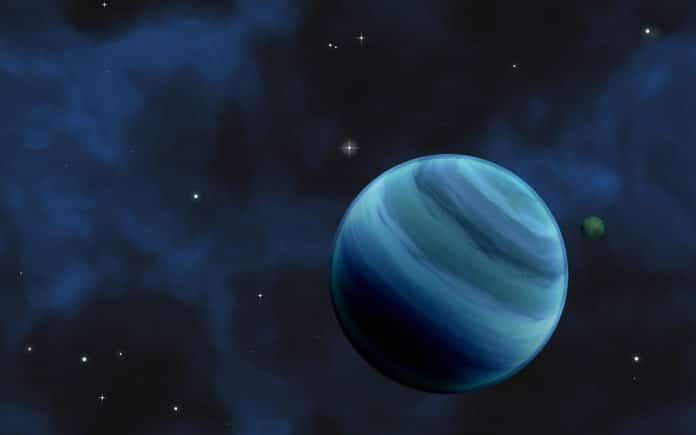Astronomers at the University of Canterbury (UC) have discovered new ‘one in a million’ Super-Earth planet towards the center of the galaxy. The planet is one of just a handful that has been found with both size and orbit equivalent to that of Earth.
The planet would have a mass somewhere between that of Earth and Neptune. It would orbit at a location between Venus and Earth from the parent star. The host star is expected to have a smaller mass than our Sun, the planet would have a ‘year’ of approximately 617 days.
Dr. Herrera Martin, the paper’s lead author, said, “To have an idea of the rarity of the detection, the time it took to observe the magnification due to the host star was approximately five days, while the planet was detected only during a small five-hour distortion. After confirming this was indeed caused by another ‘body’ different from the star, and not an instrumental error, we proceeded to obtain the characteristics of the star-planet system.”
“The combined gravity of the planet and its host star caused the light from a more distant background star to be magnified in a particular way. We used telescopes distributed around the world to measure the light-bending effect.”
UC astronomer says, “The microlensing effect is rare, with only about one in a million stars in the galaxy being affected at any given time. Furthermore, this type of observation does not repeat, and the probabilities of catching a planet at the same time are extremely low.”
Scientists observed this microlensing event during 2018 and designated OGLE-2018-BLG-0677 using Optical Gravitational Lensing Experiment (OGLE) using a telescope in Chile, and the Korea Microlensing Telescope Network (KMTNet) to which the UC astronomers belong, using three identical telescopes in Chile, Australia, and South Africa.
Paper’s co-author Associate Professor Albrow notes, “These experiments detect around 3000 microlensing events each year, the majority of which are due to lensing by single stars.”
“Dr Herrera Martin first noticed that there was an unusual shape to the light output from this event, and undertook months of computational analysis that resulted in the conclusion that this event was due to a star with a low-mass planet.”
Journal Reference:
- Antonio Herrera-Martín, Ogle-2018-blg-0677lb: A super earth near the galactic bulge. DOI: 10.3847/1538-3881/ab893e
